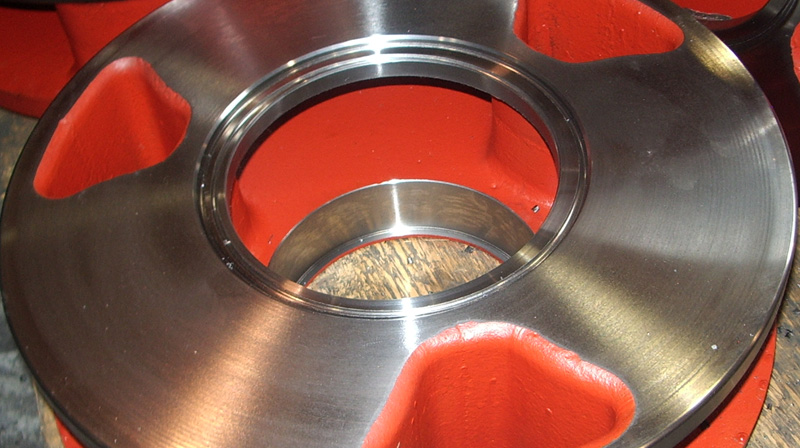Some more info he wrote this morning.
Hi Richard
It will depend on thread lubrication and how hard one yanks on the wrench--to summarize (and fwd)
1). what is the force on the T nut?
| Boltforce.xls | | |
| To determine force from a bolt | | |
| By Alex Slocum, last modified 2023.03.12 by Alex Slocum | | |
| Be consistent in units (lbf in or N mm) | | |
| Enter numbers in BOLD, output in RED | | |
| Units: | lb in | |
| Force on end of wrench | 50 | |
Length of wrench | 12 | |
Torque | 600 | |
Bolt diameter | 0.50 | |
Pitch (Lead) | 0.0769 | |
Coefficient of friction, mu | 0.2 | |
Screw pitch diameter, dscrew (mm) | 0.42 | |
Thrust bearing diameter, dthrust (mm) | 0.56 | |
Thread angle (deg), alpha (rad) | 30 | 0.524 |
Thread root stress concentration, scf | 1.5 | |
Beta | 0.182 | |
Thrust bearing efficiency, etathrust | 52% | |
Backdriveable? | NO | |
Thread efficiency, et | 20% | |
Total system efficiency, eta | 10% | |
Force, thrust | 5,077 | |
Estimated torsional stress, tau | 40,352 | |
Tensile stress, sig | 44,588 | |
Mises equivalent stress, sigma | 124,355 | |
if well lubed threads... force might be 2x, and maybe the person yanks for an impulse of force because wants to make sure no slip of the vice being bolted down:
Threads per inch (1/2-13) | 13 | |
Lever arm (in) | 12 | |
force (lb) | 100 | |
efficiency bolt thread and head | 20.0% | |
force generated (lbf) | 19,604 | |
| | |
| | |
T nut effective width | 1 | |
T nut length | 1 | 3 |
area | 1 | 3 |
stress (psi) | 19,604 | 6,535 |
| | |
| | |
Grey Cast iron yield strength (psi) | | |
low | 20,000 | |
high | 60,000 | |
this compressive force squeeze the cast iron which causes it to bulge out (Poisson affect) thereby "expanding" the cast iron around the T slot... so a number of bolts doing this in a number of different places... voila!
.
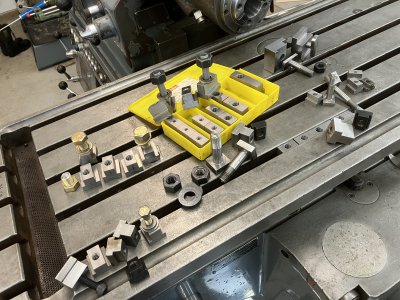 260639A8-58D6-417A-A1F9-19AEC1E9F151.jpeg687.2 KB · Views: 15
260639A8-58D6-417A-A1F9-19AEC1E9F151.jpeg687.2 KB · Views: 15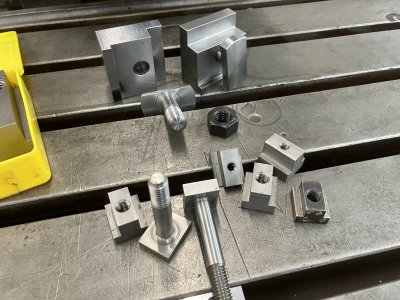 81E155A2-65D3-4056-AE96-511961A292B8.jpeg575.4 KB · Views: 12
81E155A2-65D3-4056-AE96-511961A292B8.jpeg575.4 KB · Views: 12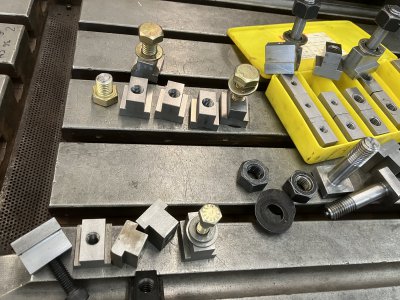 2E402DE8-8A5A-459E-B43D-1641645293F8.jpeg690.5 KB · Views: 11
2E402DE8-8A5A-459E-B43D-1641645293F8.jpeg690.5 KB · Views: 11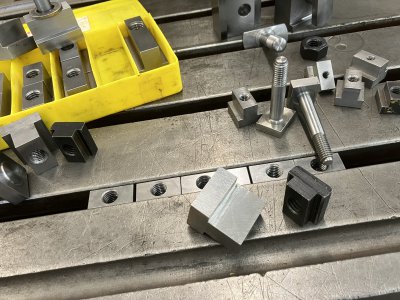 29100D58-210E-4CA0-8820-5771FC7B02FD.jpeg671.3 KB · Views: 11
29100D58-210E-4CA0-8820-5771FC7B02FD.jpeg671.3 KB · Views: 11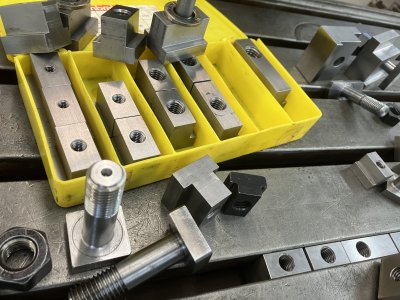 67C8E124-7F02-48CE-B5E7-08CA6E708CBF.jpeg547.8 KB · Views: 12
67C8E124-7F02-48CE-B5E7-08CA6E708CBF.jpeg547.8 KB · Views: 12

